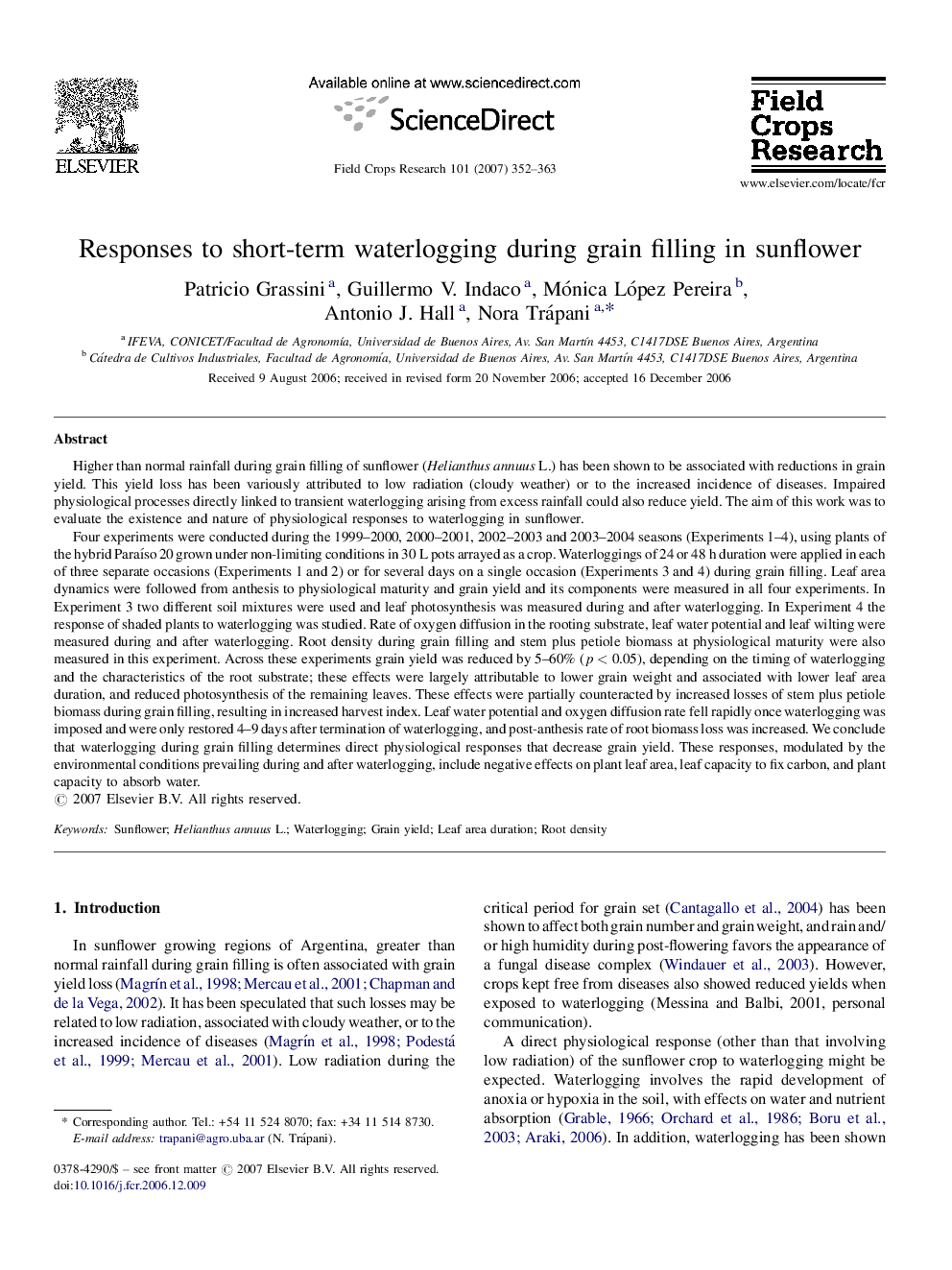| کد مقاله | کد نشریه | سال انتشار | مقاله انگلیسی | نسخه تمام متن |
|---|---|---|---|---|
| 4511454 | 1321912 | 2007 | 12 صفحه PDF | دانلود رایگان |

Higher than normal rainfall during grain filling of sunflower (Helianthus annuus L.) has been shown to be associated with reductions in grain yield. This yield loss has been variously attributed to low radiation (cloudy weather) or to the increased incidence of diseases. Impaired physiological processes directly linked to transient waterlogging arising from excess rainfall could also reduce yield. The aim of this work was to evaluate the existence and nature of physiological responses to waterlogging in sunflower.Four experiments were conducted during the 1999–2000, 2000–2001, 2002–2003 and 2003–2004 seasons (Experiments 1–4), using plants of the hybrid Paraíso 20 grown under non-limiting conditions in 30 L pots arrayed as a crop. Waterloggings of 24 or 48 h duration were applied in each of three separate occasions (Experiments 1 and 2) or for several days on a single occasion (Experiments 3 and 4) during grain filling. Leaf area dynamics were followed from anthesis to physiological maturity and grain yield and its components were measured in all four experiments. In Experiment 3 two different soil mixtures were used and leaf photosynthesis was measured during and after waterlogging. In Experiment 4 the response of shaded plants to waterlogging was studied. Rate of oxygen diffusion in the rooting substrate, leaf water potential and leaf wilting were measured during and after waterlogging. Root density during grain filling and stem plus petiole biomass at physiological maturity were also measured in this experiment. Across these experiments grain yield was reduced by 5–60% (p < 0.05), depending on the timing of waterlogging and the characteristics of the root substrate; these effects were largely attributable to lower grain weight and associated with lower leaf area duration, and reduced photosynthesis of the remaining leaves. These effects were partially counteracted by increased losses of stem plus petiole biomass during grain filling, resulting in increased harvest index. Leaf water potential and oxygen diffusion rate fell rapidly once waterlogging was imposed and were only restored 4–9 days after termination of waterlogging, and post-anthesis rate of root biomass loss was increased. We conclude that waterlogging during grain filling determines direct physiological responses that decrease grain yield. These responses, modulated by the environmental conditions prevailing during and after waterlogging, include negative effects on plant leaf area, leaf capacity to fix carbon, and plant capacity to absorb water.
Journal: Field Crops Research - Volume 101, Issue 3, 15 March 2007, Pages 352–363